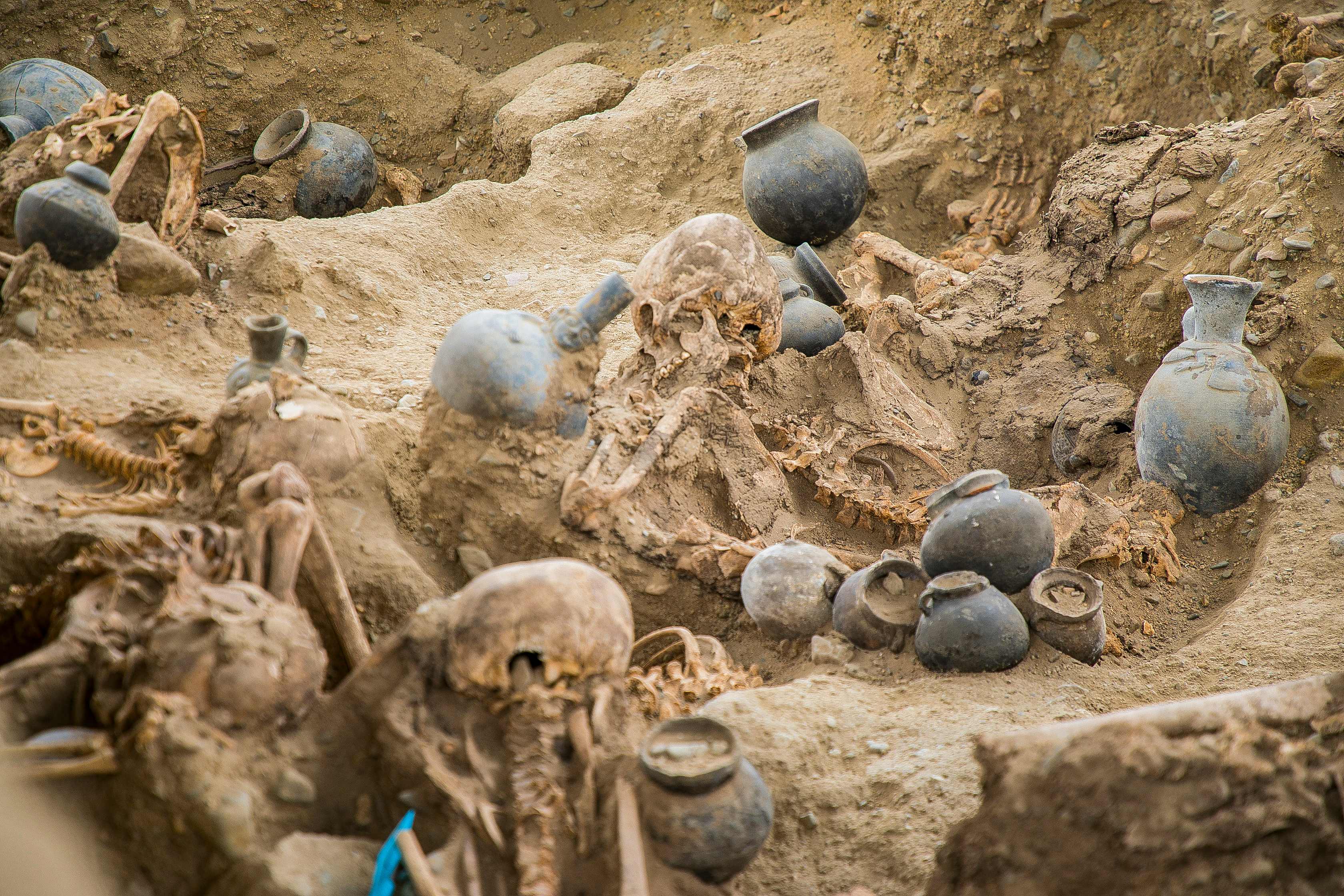Archaeologists unearth mass grave ‘in a small space’ in ancient Peruvian city
Archaeologists say the remains were mostly of women and children

Your support helps us to tell the story
From reproductive rights to climate change to Big Tech, The Independent is on the ground when the story is developing. Whether it's investigating the financials of Elon Musk's pro-Trump PAC or producing our latest documentary, 'The A Word', which shines a light on the American women fighting for reproductive rights, we know how important it is to parse out the facts from the messaging.
At such a critical moment in US history, we need reporters on the ground. Your donation allows us to keep sending journalists to speak to both sides of the story.
The Independent is trusted by Americans across the entire political spectrum. And unlike many other quality news outlets, we choose not to lock Americans out of our reporting and analysis with paywalls. We believe quality journalism should be available to everyone, paid for by those who can afford it.
Your support makes all the difference.Archaeologists have uncovered an ancient mass grave in the ancient city of Chan Chan, located around 500km north of Peru’s capital Lima.
Chan Chan, which means “resplendent Sun,” was the largest mud citadel in pre-Columbian America.
It had ten walled palaces and some 30,000 citizens living in an area of some 20 square kilometres.
UNESCO declared it as a World Heritage Site in 1986, and also listed it as one of World Heritage in Danger.
Experts said that the mass grave may have been a burial space for the elite members of the Chimú empire, reported AFP.
The Chimú empire reached its height in the 15th century and ruled parts of present-day Peru until their fall to the Incas.
Archaeologists said the skeletal remains of 25 people have been found, mostly of women and children inside a 10 square meter space.
Archaeologist Jorge Meneses Bartra said that the position of one of the skeletons suggested that it had been buried there shortly after the person’s death, reported BBC.
The other bones suggested that they had been moved to the grave later as the bones were jumbled together and appeared to be bleached by natural elements.
Archaeologist Sinthya Cueva told Reuters that this shows that the Chimú handled and moved the remains of their loved ones.
Tests will be conducted on the remains to ascertain their cause of death.
In addition, scientists also found dozens of ceramic vessels and textile work objects including needles at the site.
Join our commenting forum
Join thought-provoking conversations, follow other Independent readers and see their replies
Comments